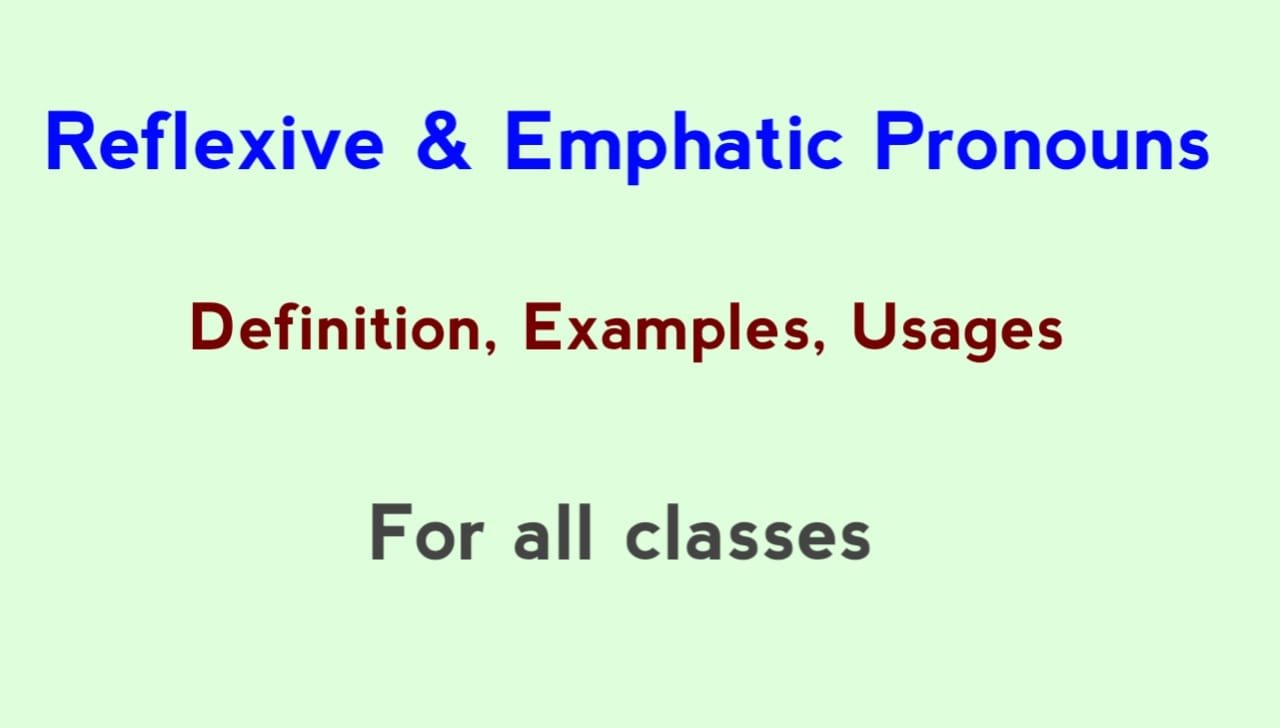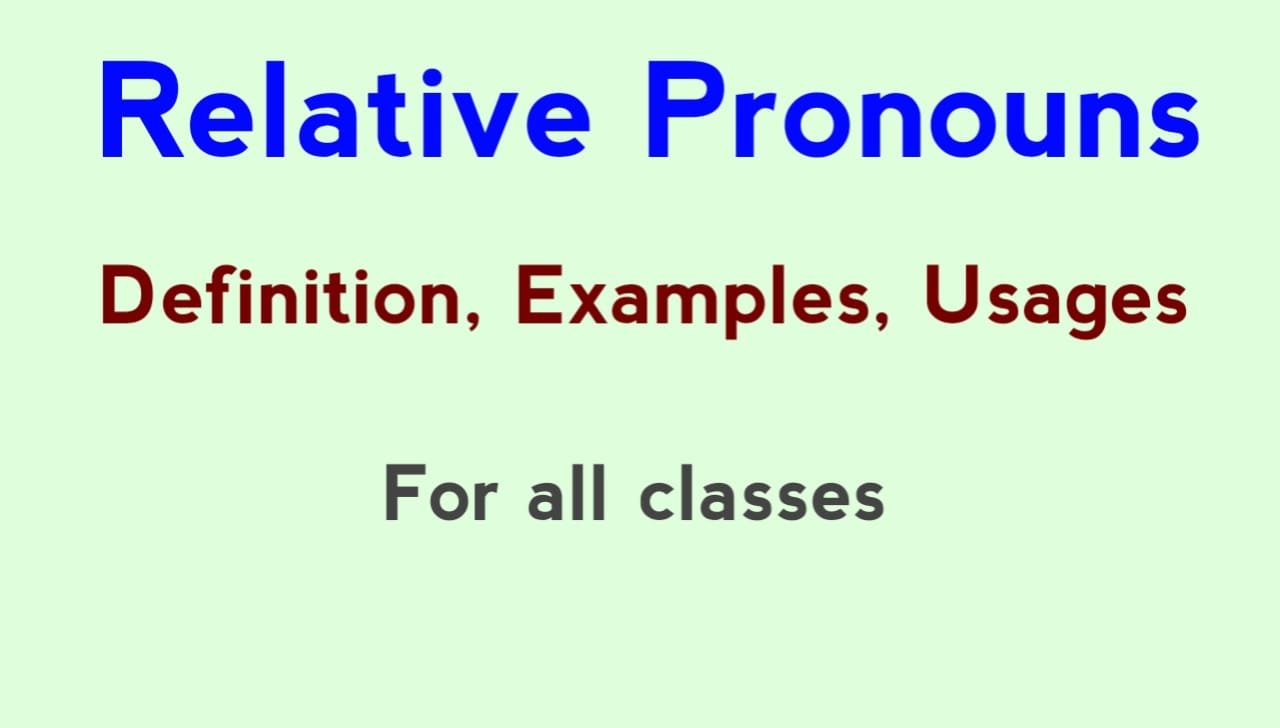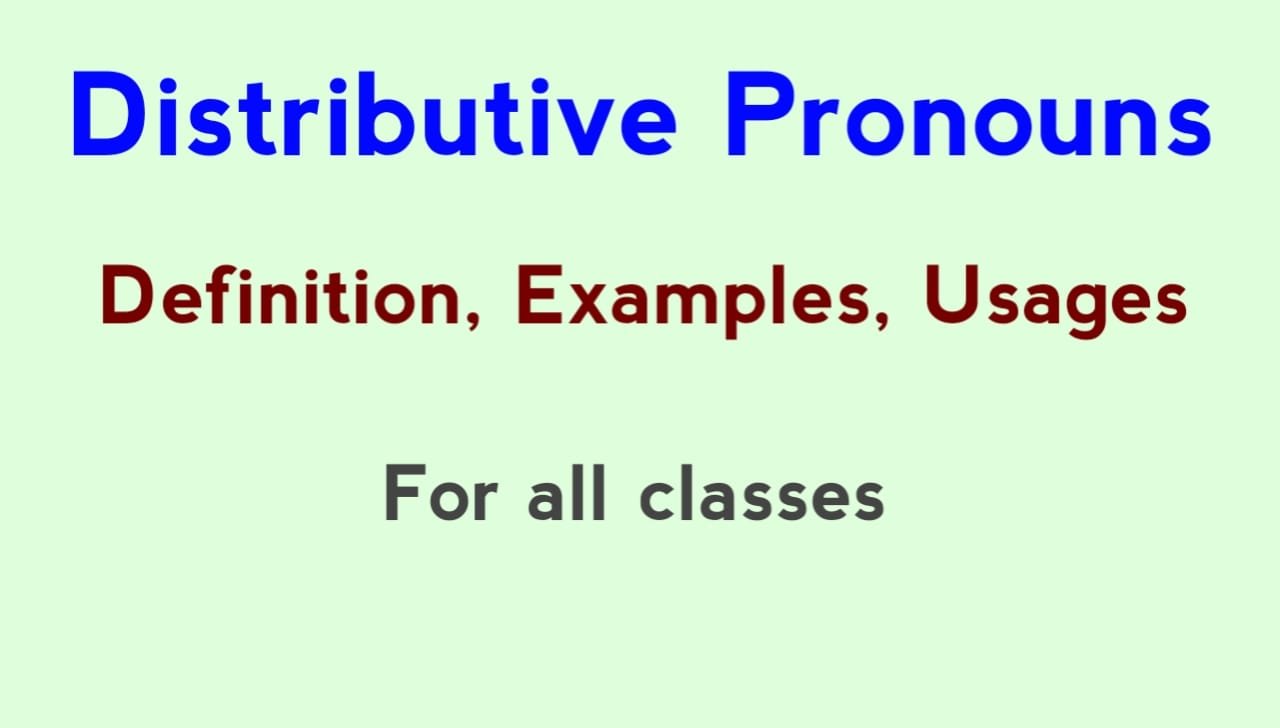Personal Pronouns give us an idea about the pronouns that stand for persons or things. This article will help to understand about the Personal Pronouns with Definition, Usage, and Examples in the following.
Personal Pronouns
Pronouns that are used instead of persons are called personal pronouns: I, We, You, He, She, They.
Examples:
(a) I have done the work.
(b) We were playing football.
(c) You are a liar.
(d) She is singing a song.
(e) They are watching a movie.
Definition: Personal Pronouns
When the pronouns stand for the person speaking, the person spoken to and the person spoken of are called Personal pronouns.
Subject personal pronouns
Personal Pronouns I, We, You, He, She, and They, are all used as subjects in a sentence. We say all these pronouns as subject pronouns. As,
- we shall go.
- I know the boy.
- They were playing football.
People also read:
| Personal Pronoun | Interrogative Pronoun |
| Possessive Pronoun | Distributive Pronoun |
| Demonstrative Pronoun | Reflexive & Emphatic Pronoun |
| Relative Pronoun | Indefinite Pronoun |
Object personal pronouns
Personal Pronouns Me, Us, You, Him, Her, and Them, are all used as Objects in a sentence. We say all these pronouns as Object pronouns. As,
- I saw her.
- I know her.
- I gave them notes.
Personal Pronouns and Person
Personal pronouns have three Persons in English Grammar. They are – 1st person, 2nd person, and 3rd person.
1st person personal pronouns:
When the pronouns refer to the person or persons speaking, are said to be Personal Pronouns of the first person. They might be either singular or plural. As,
| Person | Singular | Plural |
| 1st Person | I, me, | We, us, |
Examples:
- I am on the way.
- Ranit gave us cards.
- We are playing football.
2nd person personal pronouns:
When the pronouns refer to the person or persons spoken to, are said to be Personal Pronouns of the second person. They might be either singular or plural. As,
| Person | Singular | Plural |
| 2nd Person | You, | You, |
Examples:
- You have no intention to do this.
- John provide you with some notes.
3rd person personal pronouns:
When the pronouns refer to the person or persons spoken of, are said to be Personal Pronouns of the third person. They might be either singular or plural. As,
| Person | Singular | Plural |
| 3rd Person | He/She/It, him | They, them, |
Check also:
Examples:
- They are watching TV.
- He saw her in the park.
- She makes them conscious.
Personal Pronouns and Case
Personal Pronouns have three Cases in English Grammar. They are – Nominative Case, Objective (Accusative Case), and Possessive case.
Nominative Case
When pronouns are used as the subject of verbs, those pronouns are said to be in the Nominative case.
Examples:
- I visited the Taj.
- You can do it.
- We do not go there.
- They seldom came here.
- He is a man of word.
- She is an intelligent girl.
Objective (Accusative Case)
When pronouns are used as the object of verbs, those pronouns are said to be in the Objective (Accusative Case).
Examples:
- You can send me a message.
- I do not bother you.
- We should make her happy.
- The teacher gave us lectures.
- I saw them go away.
Possessive case
When the pronouns show ownership or possession, those pronouns are said to be the possessive pronouns.
Examples:
- This book is yours.
- That pen is his.
- We do not share the story of ours.
Table of Personal Pronouns
| Person | Nominative | Objective | Possessive |
| Singular, Plural | Singular, Plural | Singular, Plural | |
| 1st | I, we | You, You | mine, ours |
| 2nd | You, You | You, You | Yours |
| 3rd | He, She, it, They | Him, Her, it, Them | His, Hers, its, Theirs |
Examples and Usages of Personal Pronouns
Examples and Usage 1
Both Subjective or Nominated and Objective forms of Pronouns can be used after the verb to be. As,
Nominative or Subjective form of Pronouns used after to be verb is grammatically correct usage in formal English:
(1) It is I.
(2) Was it they?
The objective form of Pronouns after to be verb is also common in informal conversation :
(1) Was it them?
(2) Who’s there?
But the Nominative form or Subject Pronoun must be used when the Pronoun acts as the Subject of a verb and is followed by a Clause:
(1) It was he who helped me
(2) It was she who sang the song.
(3) It was I who helped you.
Examples and Usage 2
When a pronoun is placed in the objective case with some other word, the pronoun must be in the objective case:
(1) you abused both him and me. (not I)
(2) The book may be given to ROM or me. (not I)
(3) The boy is known to him and me. (not I)
Examples and Usage 3
when the pronoun is placed after than and as the verb is supplied mentally:
(1) He knows you more than (he knows) me.
(2) he is not so strong as you (are).
Examples and Usage 4
Sometimes the objective form is often used in place of nominative after verb to be followed by anadjective:
(1) He is more intelligent than me (than I am)
(2) you are cleverer than him (than he is).
Examples and Usage 5
With transitive verbs, the use of subject and object forms of pronouns, depends upon the sense of the complete sentence:
(1) You like her as much as me (as you like me).
(2) He helped you as well as me (as well as he helped me)
Examples and Usage 6
When the pronoun is placed after the preposition between it will be always in the objective case.
(1) The secret should remain between you and me.
(2) Divide the mango between Arun and me.
Examples and Usage 7
When ‘But’ is used as Preposition and Pronoun are placed after ‘but’, the Pronoun must be in the objective case:
(1) Nobody was present there but me ( not I)
(2) None but him ( not he) passed the exam.
Examples and Usage 7
‘Let’ is followed by a Pronoun in the Objective case:
(1) Let us go.
(2) Let me and him do the job.
Examples and Usage 8
The personal pronoun, “we” is used to refer to –
(1) Speak one for several ( called Representative we) : we are very happy to get you here today(as the headmaster of the school would say this to the chief guest in a function).
(2) a person of high authority (called the Royal we) : we(the king) follow the footsteps of our ancestors.
(3) represent the whole people by the editor of a newspaper(called the Editorial we) : we support the steps taken by government.
(4) to represent mankind at large: we must do our duty.
Examples and Usage 9
The personal pronoun, “It” is used to refer to –
(1) lower animals, if we do not mention them as male or female :
(i)The dog follows its master.
(2) little children male or female :
The baby is crying for its mother.
(3) an infinitive or a clause after it as the preparatory or professional subject :
(i) It is necessary to walk in the morning.
(ii) It is known to all that he is a good boy.
(4) An inanimate object, clause or phrase or the idea contained in it :
(i) Get the bag and give it to me.
(ii) Honesty is the best policy, he knows it.
(iii) To swim is good; it improves health.
(5) the professional object for an object to come after: I consider it wrong to do so.
(6) To emphasize a word or a phrase: it was with difficulty that I did it.
(7) The subject of impersonal verbs: it rains.
(8) to the subject of the verb to be to refer to time weather: It is a hot today. It is 5 o’clock now.
(9) to refer to a sort of cognate object: I sell fight it out to the last.
(10) It may be applied to all numbers of genders and persons when it is used at the beginning of a sentence: it was I that did it. It was these books that I wanted.
Examples and Usage 10
We commonly use neuter gender when the sex is uncertain or not clearly stated. Otherwise, the pronouns must be of the same gender and numbers as the noun for which it scans :
(1) The boy has done this work for his father.
(2) It is a healthy baby.
But when the neuter form is not allowable; pronouns with one masculine another feminine gender may be used:
(1) Every member can express his or her views.
(2) Every boy or girl may do as he or she likes.
FAQs:
Q: What is personal pronoun and examples?
Ans: Pronouns that indicate a person or a thing are called Personal Pronouns. The words I, we, You, He, She, It, and They are personal pronouns.
Q: What are the 12 personal pronouns?
Ans: I, we, You, He, She, It, They, Me, Us, Him, Her, and Them are the 12 personal pronouns.
Q: What are 10 examples of personal pronouns in a sentence?
Ans: (1) Let us go.
(2) Let me and him do the job.
(3) You can send me a message.
(4) I do not bother you.
(5) We should make her happy.
(6) The teacher gave us lectures.
(7) I saw them go away.
(8) They are watching TV.
(9) He saw her in the park.
(10) She makes them conscious.
Q: How do you introduce personal pronouns?
Ans: We call I, we, You, He, She, It, They, Me, Us, Him, Her, and Them the personal pronouns as they stand for a person or thing.







